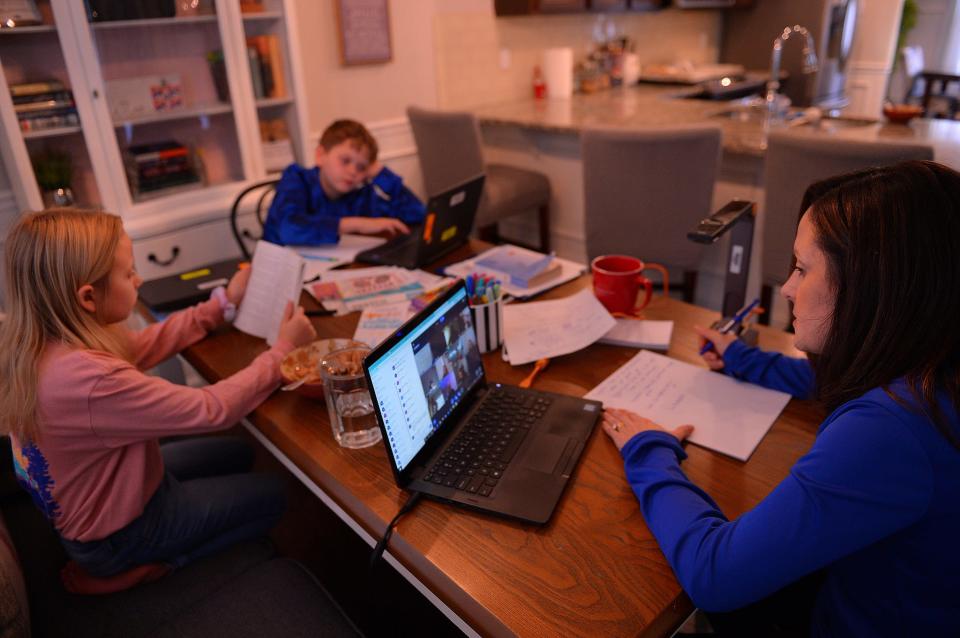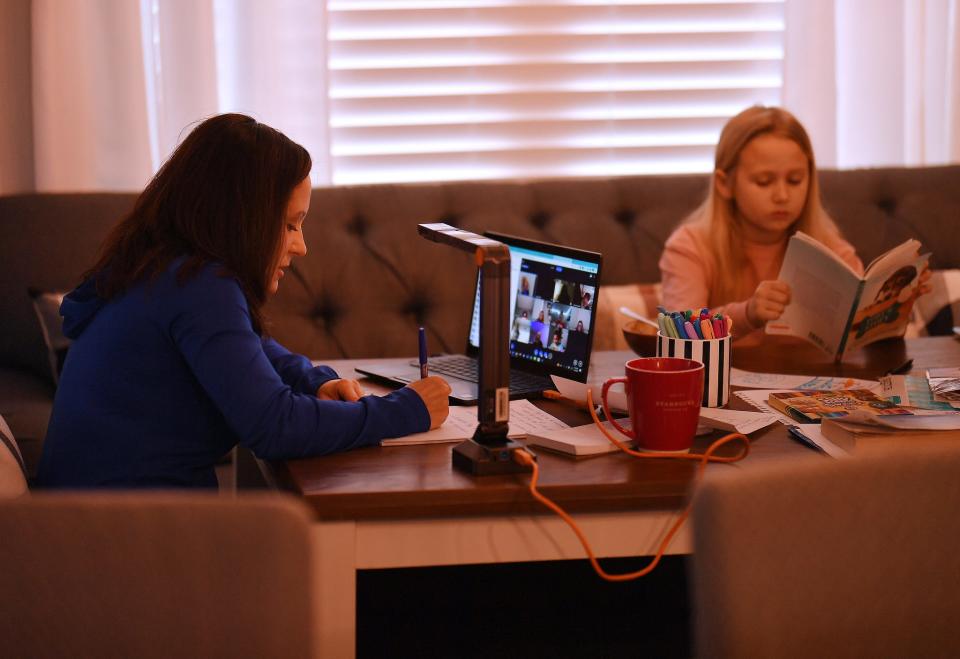Spartanburg teachers discuss e-Learning, how it has changed the learning experience
Spartanburg residents woke up Sunday morning to a winter wonderland with up to 5.5 inches of snow and sleet in the city and some areas north of the city getting up to 8 inches.
Most roads in the Spartanburg area were still snow and ice covered Monday and Tuesday, prompting all Spartanburg County school districts to close their buildings and shift to e-Learning Tuesday, Wednesday and Thursday.
E-Learning is a learning system based on formalized teaching but with the help of electronic resources. When schools experience a temporary disruption in regularly scheduled school days, such as inclement weather, and traditionally would have to cancel school, Spartanburg students are able to continue their lessons at home via e-learning.
Aly Myles Ruggiero, Spartanburg County School District Three Director of Public Information and Communications says e-Learning is a temporary basis for all students, while virtual learning refers to a fulltime program that is taught completely remotely.

“For our district, this began during the beginning of the pandemic,” Ruggiero said. “Initially, all the Spartanburg County districts had their own virtual program. Now, it’s a shared virtual program for us all.”
The Herald-Journal spoke with three Spartanburg County District 3 teachers this week about their experiences with e-Learning.
Broome High School teacher adapts, more prepared for e-Learning
Tyler Crosby teaches U.S. History and a Current Events class to 10th-12th graders at Broome High School and says his e-Learning days are much more structured and productive now than it was when e-learning and teaching virtually began 2 years ago when the pandemic began.
“I wasn’t prepared for it two years ago,” Crosby said. “But after COVID hit, I started recording all my lessons using video and audio just in case we had kids out. My students are now prepared and know what to do when learning from home.”
Higher education: Spartanburg Community College extending free tuition into 2022-23 academic year
Crosby says lost instruction time due to a transition to e-Learning is not an issue with his classes. He teaches around 45 minutes via webcam then gives his students assignments to complete. Self-accountability does play a factor in how successful a student will be while learning at home, and Crosby says this is an advantage older students (high school or middle school) have over younger school-age children.
“High school kids have to hold themselves more accountable than younger students,” Crosby said. “I imagine it is a bit more challenging for elementary school teachers because a student’s success with e-Learning will also depend on their parents and what their home life is like.”
Cannons Elementary teacher: e-Learning days about reinforcing skills
Tonya McCullough is a 5th grade teacher at Cannons Elementary School and says she doesn’t send home new material or assignments for her students to learn on e-Learning days. She says it is more about reinforcing and practicing skills her students have already learned in class.
“Parents will communicate with me when their child needs help on any assignments,” McCullough said. “Today I met via webcam with many of students to help them understand the assignments.”
Weather: More snowfall could be on the way as Upstate SC thaws out from winter storm
Not all McCullough’s students have access to the internet, so she sends home paper packets for those students. She communicates via Class Dojo (an app) with students and parents who do have access to the internet.
“E-Learning and virtual learning are completely different,” McCullough said. “I don’t want to overload my students with work, especially on snow days because I want them to enjoy the snow with their families.”
Broome teacher balances teaching and parenting

Marie Fox teaches 9th-10th grade Biology and AP Biology at Broome High School. She’s also mom to Ryan, 3rd grade, and C.J., 5th grade. Many teachers who are also parents have learned to balance the responsibility of teaching their students during e-Learning days as well as monitoring their own children’s assignments as well.
“My children learned independency very quickly during COVID,” Fox said. “That was a struggle, but we learned the best way is to set up an efficient system that works for us.”
More: Inclement weather postpones Spartanburg and Cherokee county athletics
Fox says she is positive about the concept of e-Learning because it allows her to keep pace with the curriculum, and the students to continue with their content. She also pointed out many high school students are learning to self-pace and what makes their day most productive.
“Some students may need more sleep and will be more productive if they can sleep in until 9 a.m.,” Fox said. “As long as they check in on their time frames and turn in their assignments, then they are counted as present.”
e-Learning challenges, benefits
While there are many positive aspects of e-Learning and what it can offer teachers and students, Crosby said he is concerned about the mental health aspect of e-Learning and virtual learning over time.
"I've noticed some students just don't handle learning at home very well," Crosby said. "Some need to be in-person. A lot of kids get safety and comfort at school while not getting that at home. I've seen a major increase in kids struggling with anxiety and stress in general."
One aspect of e-Learning all three teachers pointed out was the district won’t have to make up missed snow days at the end of the school year. Typically, any missed days schools have due to inclement weather needed to be added on at the end of the school year.
Crosby, McCullough and Fox all pointed out these added-on days at the end of the school year were added after any standardized testing and after grades have been turned in to the district office. Therefore, curriculum instruction most likely didn’t take place on those days. With the implementation of e-Learning, students aren’t losing instruction time.
Districts have announced due to continued, dangerous road conditions for student-drivers, parents, and buses, Spartanburg School Districts 1, 2, 3, 4, 5, 6, and 7 will have an e-Learning day on Thursday, January 20.
Ashley Dill is a native of Spartanburg and has been on staff for the Herald-Journal for 14 years. She covers community news and can be reached at ashley.dill@shj.com or on Twitter at @ashleydill_shj.
This article originally appeared on Herald-Journal: Spartanburg County District 3 teachers discuss e-Learning days

